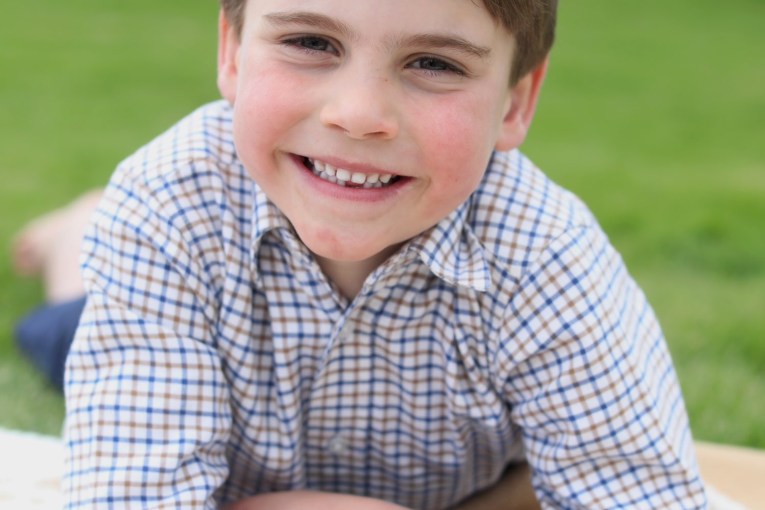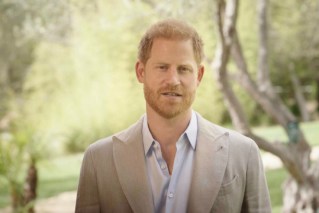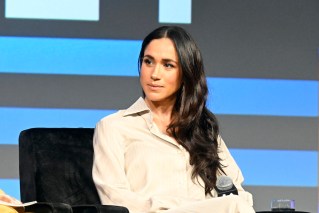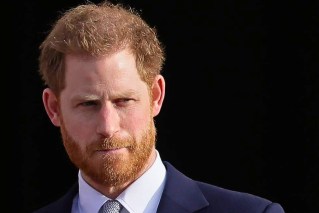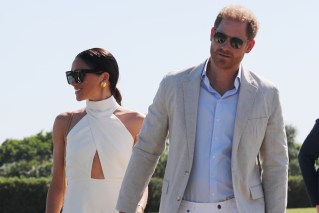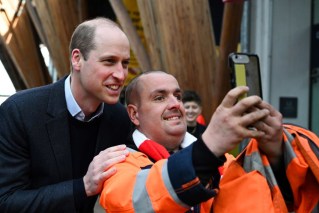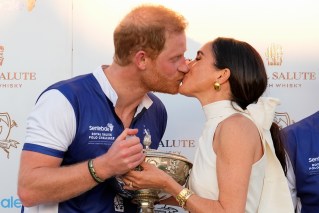Fact-checking The Crown: What really happened when Diana and Charles came to Australia
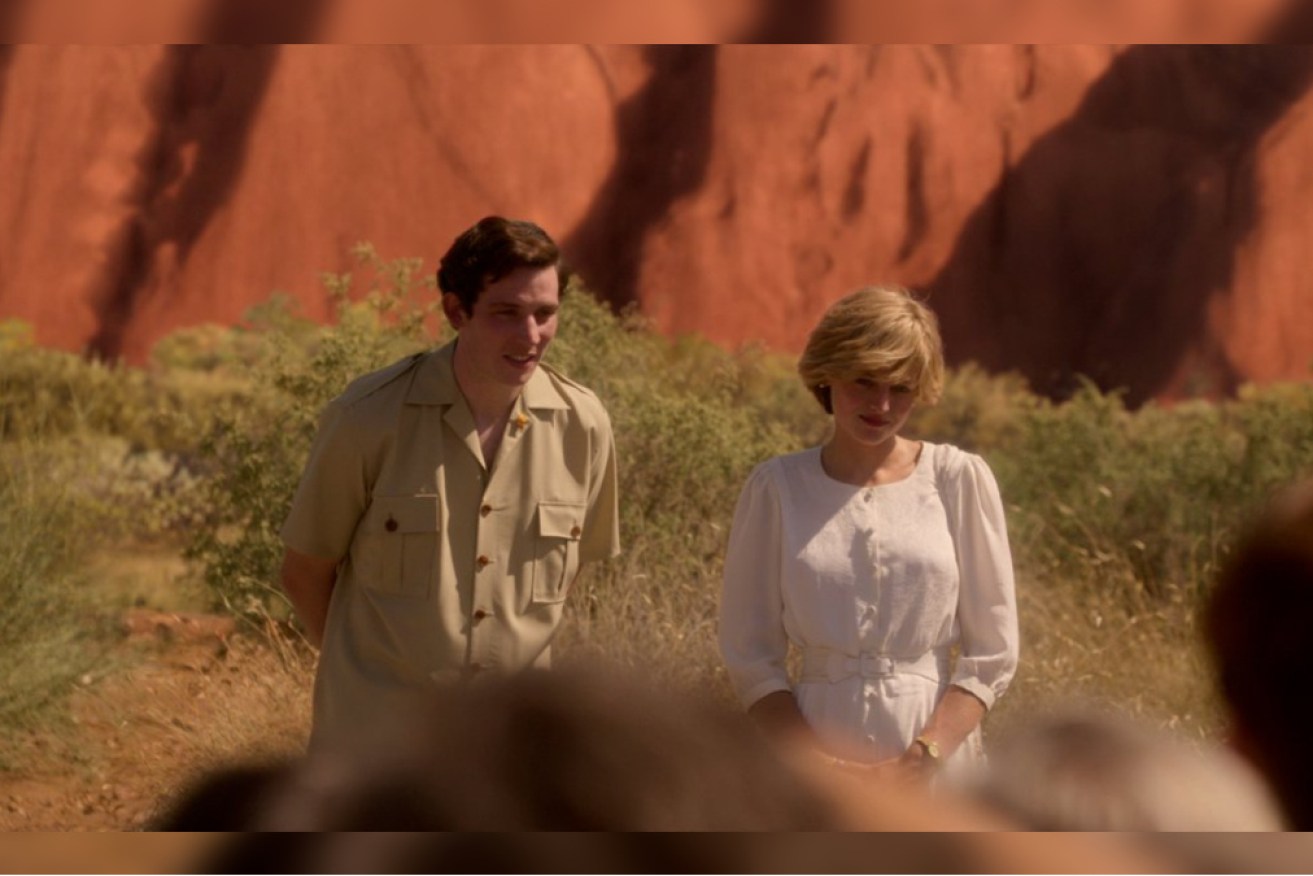
The popular Netflix series included a storyline about the royal couple's Australian tour – but it didn’t quite match reality. Photo: Netflix
It was, as Princess Diana’s “long-time confidant” would later recall, a “baptism of fire” for the fledgling royal.
Stepping onto the tarmac at Alice Springs airport, into the throes of eager dignitaries and the voracious media pack, the then-21-year-old was “uneasy, even glum”, staring at the ground “with downcast eyes throughout much of the brief airport picture session”.
Fast forward a month, and the woman once described by reporters as having to “work mightily to produce … the smile of a proud and happy young mother” would have the heart of the nation in her hands, cementing her status as “the people’s princess”.
Prince Charles, Princess Diana and baby William’s debut visit to Australia as a family in March 1983 is now the subject of the fourth season of Netflix’s blockbuster royal drama, The Crown, which explores simmering jealousies and growing fractures within the monarchy.
“While Charles’ romance with a young Lady Diana Spencer (Emma Corrin) provides a much-needed fairytale to unite the British people,” the series bills, “behind closed doors, the royal family is becoming increasingly divided”.
So what actually happened during the royal visit? We’ve taken a look back through the archives.
‘The toughest test Diana has faced’
Few, least of all Princess Diana, were unaware of the visit’s significance.
Just two years into her marriage with Prince Charles, it would be the new royal’s first overseas tour – and at a time of political delicacies.
The dismissal of the Whitlam government in 1975 had damaged public perceptions of the monarchy, while Bob Hawke – an avowed republican – had been elected prime minister just two weeks before their arrival.
“The tour Down Under is likely to provide the toughest test Diana has faced since she became a Royal,” reporter James Whitaker wrote for UK newspaper the Daily Mirror, before the 1983 visit.
Though British media were confident the “new Royal combination” would “melt any republican heart”, Princess Diana – who the nation only knew from afar – was “petrified of facing the crowds, meeting the countless dignitaries as well as the fabled royal ‘rat pack’,” her biographer Andrew Morton would later write of the visit.
Reports from the time suggest that upon her arrival in Alice Springs, the princess appeared upset and “stood holding Prince William with something less than a smile on her face”.
“A clucky English woman journalist suggested the reason might have been that nine-month-old Prince William was about to be taken from her for the best part of three days, and cared for by the two royal nannies at Woomargama, near Albury, while the royal couple completed the Central Australian leg of their four-week Australian tour,” journalist Geoffrey Barker wrote for The Age.
“Whatever the reason, Princess Diana had to work mightily to produce for the photographers the smile of a proud and happy young mother.”
A shaky start
For the royal couple, the trip was off to a shaky start – in more ways than one.
In the days leading up to their visit, the typically dry Todd River had burst its banks, flooding the power station and leaving Alice Springs without power.
Unable to reach their luxury accommodation, the pair were instead handballed to the Gap Motel.
“It’s not the Palace, true,” read the front page of the Daily Mirror, which had been sold exclusive photos from inside the suite, taken just hours before the royals’ arrival.

The Daily Mirror was sold exclusive photos of the inside of the room where the royals would stay. Photo: British National Archive
 The tour, which would span thousands of kilometres through Australia and New Zealand and include up to eight public appearances per day, was always going to be gruelling, and a few hiccups were to be expected.
The tour, which would span thousands of kilometres through Australia and New Zealand and include up to eight public appearances per day, was always going to be gruelling, and a few hiccups were to be expected.
But Princess Diana’s “youth and apparent shyness” had reportedly prompted concerns from the Queen, and – in the early days of the arrival, at least – it would seem the cracks were beginning to show.
“The 21-year-old princess, looking sunburnt after her three-hour sunbath in the blistering heat yesterday, was clearly nervous before the microphone as she gave her first radio interview,” the Evening Chronicle reported on March 21, 1983.
“She giggled rather nervously and let Prince Charles do most of the talking.”
A ‘once in a lifetime’ welcome
Despite the shaky start, the “people’s princess” – a moniker that has stood the test of time – was hardly an unknown quantity.
As British media pointed out ahead of the trip, “the Aussies and Kiwis have had all the pre-tour publicity”.
“They’ve been hearing for more than two years how wonderful Diana is,” wrote the Daily Mirror. “Now they will be able to judge for themselves.”
And judge they did.
Princess Diana’s apparent “lack of pretension” struck a chord with the Australian public, even “mesmerising” the avowedly republican Hawke and his then-wife Hazel.
“She is very charming. She is also lovely. But those eyes of hers – they are so beautiful,” Mrs Hawke told the Daily Mirror on March 23, 1983, shortly after meeting the royal couple.
“Likewise. I would like to say the same,” added the PM.
From city to city, the headlines painted a familiar story.
Residents of “flood-ravaged Alice Springs were won over by Princess Diana – even before she arrived“, declared the Evening Mirror, while frenzied crowds of more than 100,000 “mobbed” Princess Diana during a Royal walkabout in Brisbane.
The “normally cynical people” of Sydney, meanwhile, put on a “ticker-tape welcome only seen once in a lifetime“.
“The people of this most sophisticated of Australian cities went wild for the delicate 21-year-old English rose and mobbed her from one side of town to the other,” wrote the Newcastle Evening Chronicle on March 28, 1983.

Princess Diana’s apparent “lack of pretension” struck a chord with the Australian public. Photo: British National Archive
Prince Charles ‘jealous’ of Diana’s popularity
While Peter Morgan, the man behind The Crown, concedes “When I write … there are the things that I want to be the case and there are the things that are the case”, there is some truth to the narrative that Diana’s intense popularity only exacerbated simmering jealousies within her marriage.
Prince Charles, who had been largely reduced to a “walk-on” role throughout the tour, was reportedly upset at being overshadowed.

Prince Charles and Princess Diana at an event during the 1983 Royal tour of Australia. Photo: ABC Archives
“Victor Chapman, the press secretary on the tour, got used to late-night phone calls from Charles complaining about the scant coverage of himself in the press compared to the hagiographic acres accorded of his wife,” Tina Brown wrote in her 2007 biography, The Diana Chronicle.
Princess Diana would later remark that she was taken back by the response from the public: “[Charles] wasn’t used to that and nor was I”.“He took it out on me,” she told Morton. “He was jealous; I understood the jealousy but I couldn’t explain that I didn’t ask for it.”
As Morton, her “long-time confidant” tells it, the tour was “utterly traumatic” for the Princess of Wales. In the privacy of her hotel room, he wrote, she “cried her eyes out, unable to handle the constant attention”.
Her separation from Prince William, who was just nine months old at the time, only made their Australian debut more difficult.

Princess Diana holds Prince William during the 1983 visit. Photo: ABC Archives
Princess Diana’s reluctance to leave his side (an experience she described as “like torture”) was largely incongruous with royal protocol and, during a visit to Canberra, she spoke of the life “she would really like to lead – that of a humble housewife, raising her son”.
“I wish I didn’t have to leave William with his nanny,” she told the wife of an army training officer in Canberra. “I’d much rather be doing what you are doing.”
A lasting legacy
While Princess Diana may have been “overwhelmed by the size of the crowds in a nation gripped by Di-mania“, it would seem the tour had served its purpose.
The royal family had been catapulted “even more into the public eye”, newspaper reports noted in the days and weeks following, paving the way for what the Liverpool Echo described as a “massive exodus to Australia by British holidaymakers”.

The royal family had been catapulted “even more into the public eye”, newspaper reports noted in the days and weeks following. Photo: British National Archive
In one particularly tongue-in-cheek op-ed for the Sydney Morning Herald, satirist Alan Fitzgerald went as far to suggest that, given the public reception, Australia should establish “our own home-grown monarchy”, led by the royal couple.
“The royal boys would naturally be enrolled at The Kings School, Parramatta, and be brought up to open fetes, cut ribbons, visit Ayers Rock, make good after-dinner speeches and ultimately, become state governors,” he quipped.
While The Crown stretches its artistic licence when it comes to Diana’s influence on national opinions of the monarchy (perhaps none more so than when Hawke is purported to have remarked, “That superstar may have just set back the cause of republicanism in Australia for the foreseeable future”), the Princess of Wales emerged from the royal tour as a “seasoned, media sophisticate with the stamina and charm of a big-time star”, according to Brown.
“By the end of Charles and Diana’s tour a poll in Australia found that monarchists outnumbered republicans two to one, and that was the point, wasn’t it?” she wrote.
“The young Princess of Wales had proved she was a dazzling new PR weapon for the British Crown.”
